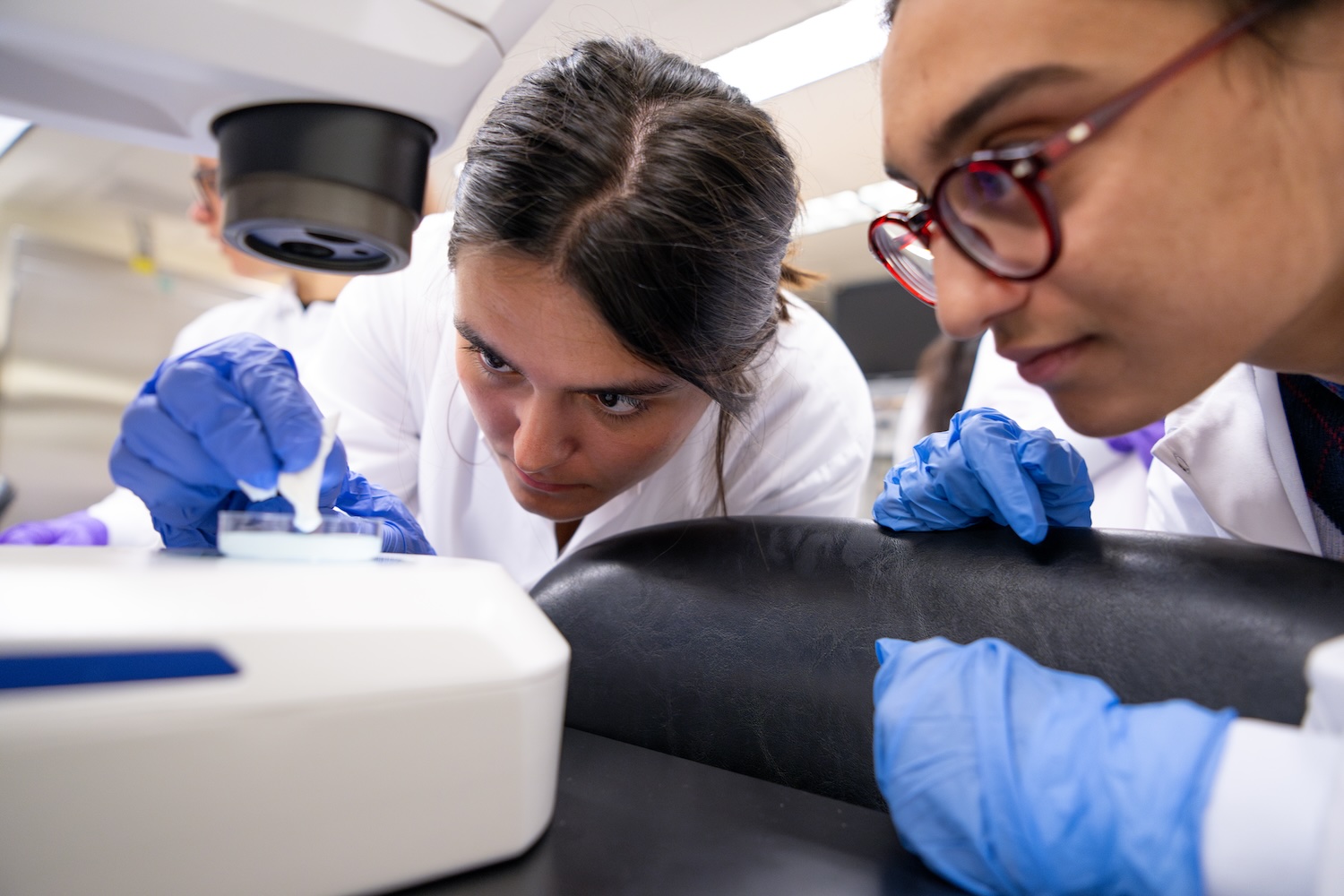Featured News

The brain divides vision between its two hemispheres — what’s on your left is processed by your right hemisphere, and vice versa — but your experience with every bike or bird that you see zipping by is seamless. A new study reveals how the brain handles the transition.
“It’s surprising to some people to hear that there’s some independence between the hemispheres, because that doesn’t really correspond to how we perceive reality,” says Earl K. Miller, Picower Professor in the Picower Institute for Learning and Memory and MIT’s Department of Brain and Cognitive Sciences. “In our consciousness, everything seems to be unified.”
Led by Picower Fellow Matthew Broschard and Research Scientist Jefferson Roy, the research team measured neural activity in the brains of animals as they tracked objects crossing their field of view. The results reveal that different frequencies of brain waves encoded and then transferred information from one hemisphere to the other in advance of the crossing, and then held on to the object representation in both hemispheres until after the crossing was complete. The findings were published in the Journal of Neuroscience.
Featured News

The first comprehensive map of mouse brain activity has been unveiled by a large international collaboration of neuroscientists.
Researchers from the International Brain Laboratory (IBL), including BCS neuroscientist Ila Fiete, published their open-access findings today in two papers in Nature, revealing insights into how decision-making unfolds across the entire brain in mice at single-cell resolution. This brain-wide activity map challenges the traditional hierarchical view of information processing in the brain and shows that decision-making is distributed across many regions in a highly coordinated way.
Featured News

A new study from MIT neuroscientists reveals how rare variants of a gene called ABCA7 may contribute to the development of Alzheimer’s in some of the people who carry it.
Dysfunctional versions of the ABCA7 gene, which are found in a very small proportion of the population, contribute strongly to Alzheimer’s risk. In the new study, the researchers discovered that these mutations can disrupt the metabolism of lipids that play an important role in cell membranes.
This disruption makes neurons hyperexcitable and leads them into a stressed state that can damage DNA and other cellular components. These effects, the researchers found, could be reversed by treating neurons with choline, an important building block precursor needed to make cell membranes.


